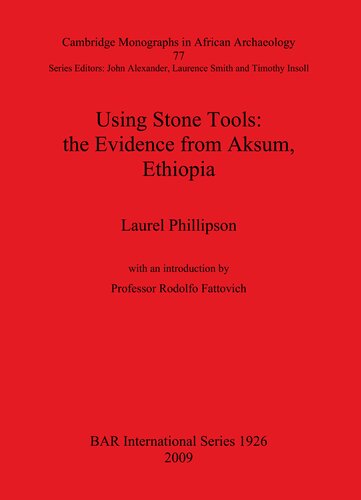

Most ebook files are in PDF format, so you can easily read them using various software such as Foxit Reader or directly on the Google Chrome browser.
Some ebook files are released by publishers in other formats such as .awz, .mobi, .epub, .fb2, etc. You may need to install specific software to read these formats on mobile/PC, such as Calibre.
Please read the tutorial at this link: https://ebookbell.com/faq
We offer FREE conversion to the popular formats you request; however, this may take some time. Therefore, right after payment, please email us, and we will try to provide the service as quickly as possible.
For some exceptional file formats or broken links (if any), please refrain from opening any disputes. Instead, email us first, and we will try to assist within a maximum of 6 hours.
EbookBell Team

4.0
46 reviewsIn this book the author presents the results of more than ten years of systematic fieldwork and analysis of the stone tool assemblages in the region of Aksum (Ethiopia). The result is a detailed description and interpretation of the different lithic traditions which were incorporated into the local Pre-Aksumite and Aksumite cultural traditions and represented an important component of the ancient polities in the region, providing a much more complicated picture of the social and economic development of these polities than that so far outlined on the basis of the ceramic and architectural evidence. The study is a very important contribution to the archaeology of Aksum (northern Ethiopia) as well as Ethiopian and African archaeology, as it provides scholars with the first exhaustive analysis and interpretation of the stone tools dating to historical time (1st millennium BC – 1st millennium AD) in the region of Aksum. The book, moreover, is a crucial contribution to the cultural resources management in the archaeological area of Aksum insofar as it provides a complete inventory of all assemblages with stone tools in the region. These assemblages are vanishing very quickly because of the fragility of the archaeological deposits and the urban expansion in thearea. Therefore, the descriptions of the sites and their assessments are most likely the last records of this evidence.